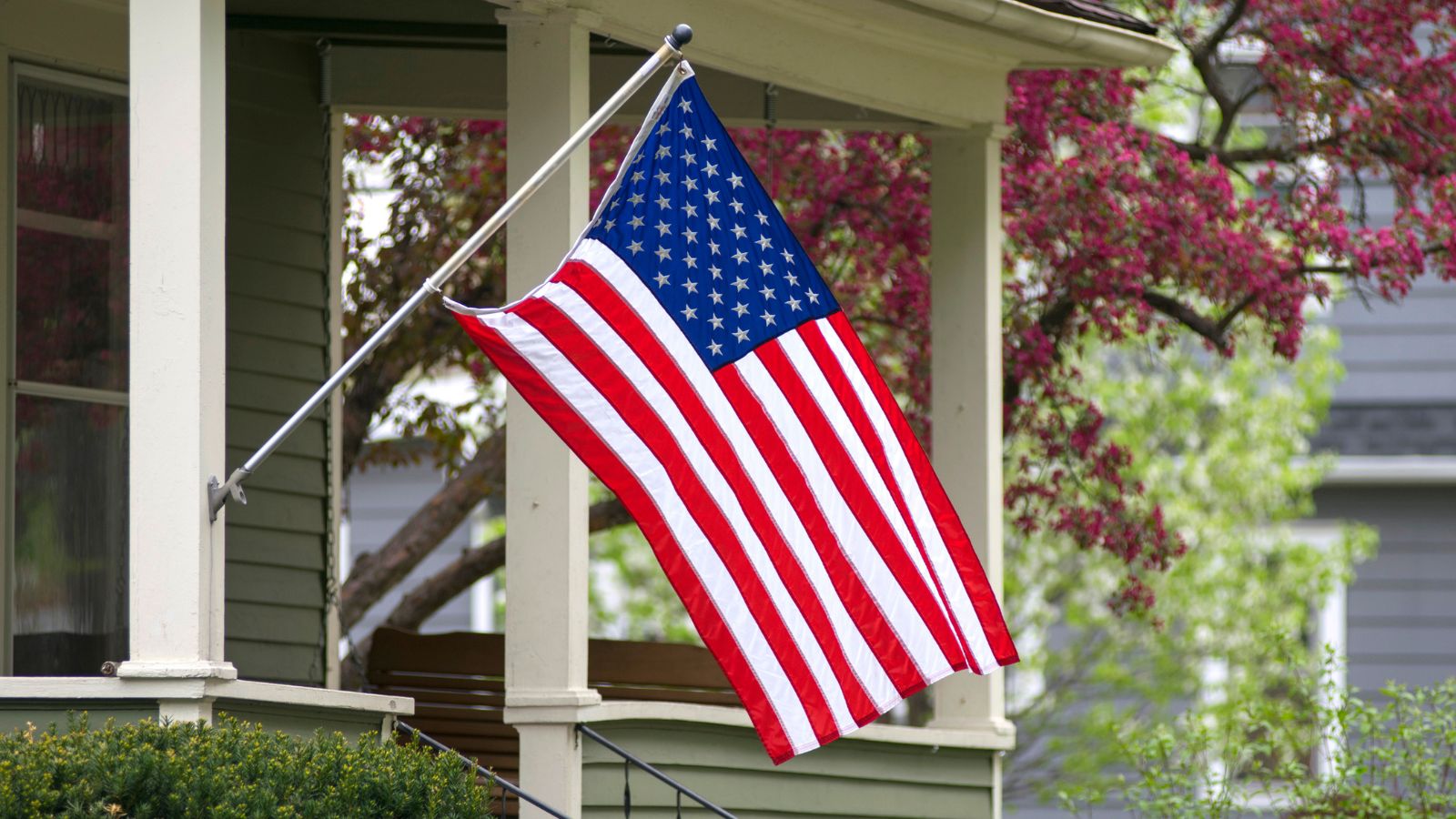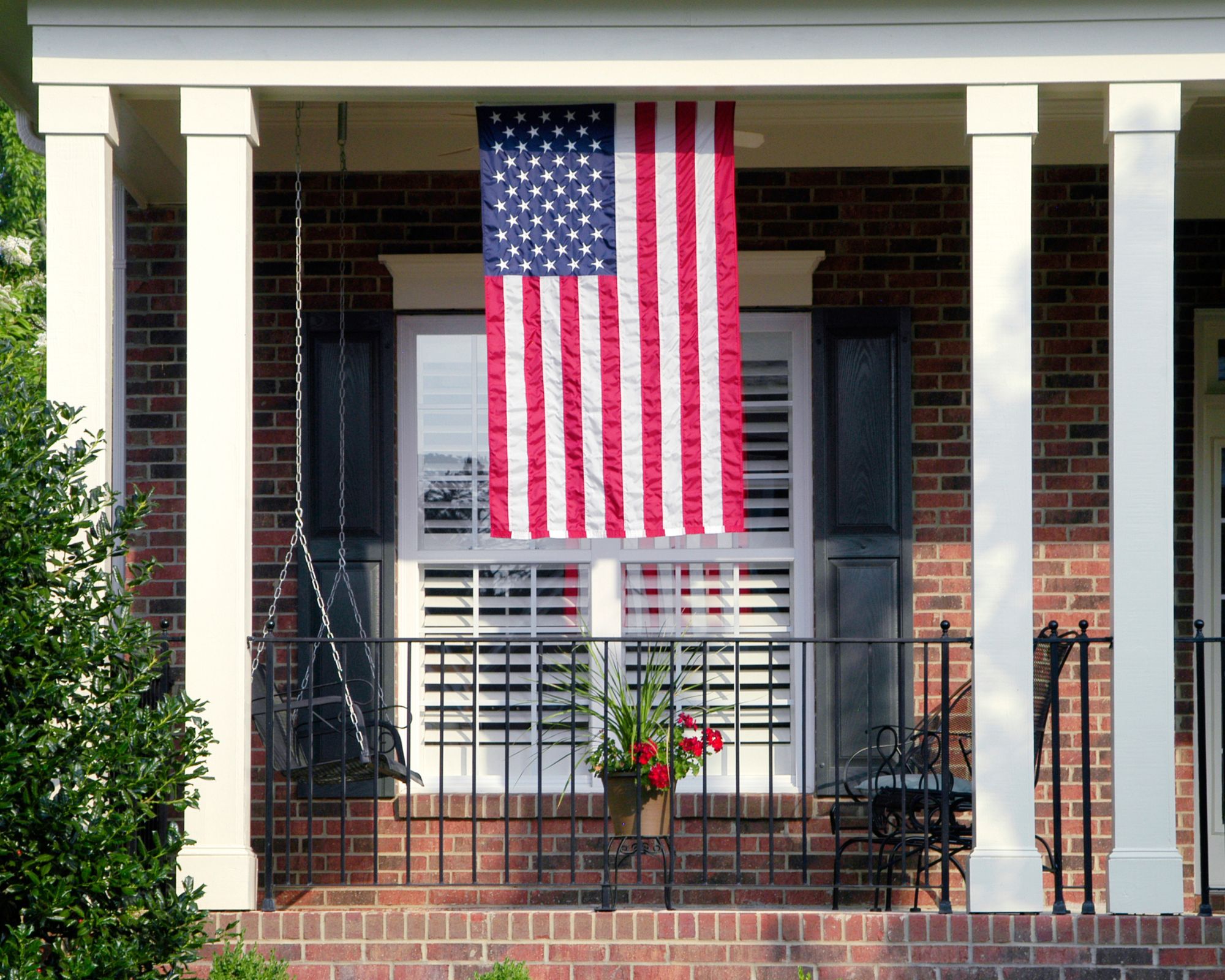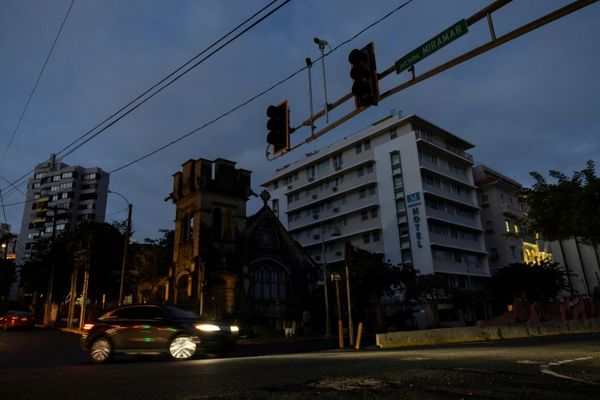
There's no better way to celebrate America's independence this July 4th than to proudly display the stars and stripes in front of your home. A symbol of freedom and liberty, flying the US flag is a way for Americans to mark the signing of the Declaration of Independence in 1776. But if you're planning on displaying Old Glory, there are some rules worth knowing.
American Public Law contains the Federal Flag Code, which lists rules and guidance on how to handle and display the US flag. There are strict instructions on directions and height to hang your flag, as well as traditional ways to show your respect.
You're ultimately free to do what you want with your flag - it's the point of the holiday, after all, and the federal code contains no sanctions for breaking the guidelines. However, there's no harm in following the customs and being respectful.
We've put together a quick explainer on what to do, and what not to do when it comes to flag etiquette. Whether you're displaying your July 4th decorations outside your house, hanging them from a porch, or proudly decorating the street, learn how to celebrate correctly.
8 Flag Code rules to follow
1. Display only from sunrise until sunset - unless lit at night

It's tradition to display the US flag on national and state holidays like July 4th, New Year's Day, Labor Day, and Thanksgiving, but you should only have it out from sunrise until sunset. As Flag Guru, Michael Buss states 'The Flag Code states that it is the universal custom to display the flag only from sunrise to sunset on buildings and on stationary flag staffs in the open.' Overnight, you should bring the flag in, and store it correctly.
However, this is an exception to this rule – you may keep the flag out for the full 24 hours if it is illuminated well after dark. It is customary to make sure the flag is visible to the public at all times. 'When a patriotic effect is desired, the flag may be displayed twenty-four hours a day if properly illuminated during the hours of darkness. “Proper illumination” is a light specifically placed to illuminate the flag (preferred) or having a light source sufficient to illuminate the flag so it is recognizable as such by the casual observer.' explains Buss.
For a flag that you can display from July 4th right through to Thanksgiving, this Amazon best-selling nylon US flag is heavy-duty and weather-resistant. Fit for overnight (as long as it's lit) and long-term use, it has embroidered stars, sewn stripes, and brass grommets for a premium design that won't damage easily. It is, of course, made in the USA.
If you're worried about all the rules and regulations, buying bunting instead of a flag allows you to show your allegiance without having to comply with the Flag Code. This Made in USA bunting from Amazon is under $20 and will look beautiful draped over your porch, deck, or out of window. It's made of polyester and cotton designed with outdoor use in mind.
For a smaller, subtler way of marking the day, try this garden flag. It's great for nestling in a flowerbed by a porch to welcome your guests.
2. Don't let the flag touch the ground
You should never let your flag touch the ground. As an imperative sign of respect, the flag should be displayed with enough space from the ground to ensure it never drops or drags on anything beneath it. You should pay special attention to this if you're hanging the flag from your front porch.
3. The flag should never be displayed with the union down

A popular way of displaying the flag at home is to project it from the front of your house. When doing so, it's important to have it the 'correct' way around, which involves having the union of the flag at the top, and if using a pole, at its peak.
To have the union down signals dire distress, such as extreme danger to life or property. Unless in such circumstances, the flag should never be displayed with the union down.
4. Never use it as apparrel or drapery
The flag or any part of it should never be used as apparel, drapery, or costume. According to the letter of the law, 'the flag is a representation of a living country and is considered a living thing'. Because of this, it should never be used in a way that could be deemed disrespectful or humorous.
However, 'unless an article of clothing is made from an actual United States flag, there is NO breach of flag etiquette whatsoever.' adds Michael Buss. 'People are simply expressing their patriotism and love of country by wearing an article of clothing that happens to be red, white, and blue with stars and stripes. There is nothing illegal about the wearing or use of these items.'
A flag patch may also be pinned to the uniform of patriotic organizations, military personnel, public service police officers, and firefighters.
5. It should never been used to cover a ceiling

While it may seem like the perfect decoration for a July 4th party, clause F of the Flag Code says that you should never use the flag to cover the ceiling.
6. Do not use the flag for advertising purposes
The flag should not be used for any advertising purposes. This includes the flag being used in designs, artworks, or visual representations, even if it does not explicitly replicate the flag. Some states may infringe fines for anyone who may manufacture, sell, or use the flag for advertisement in public view. For example, the flag should not be printed, embroidered, or impressed on anything that would be sold, used, and then discarded.
7. Store it correctly, without risk to damage
When the celebrations come to a close, taking care when you store the flag is just as important as displaying it.
Store your flag so it cannot be easily soiled, stained, or torn. You should keep the flag in a cool dry place, protected from any potential weather damage, and away from any dirt, moisture, and strong sunlight. The best method for storage is to fold the flag into a triangle with only the stars and stripes visible. This is a good way to keep your flat neat overnight if you're bringing it in after sunset too.
Good-quality flags can last for years. In fact, many keep them until they become heirlooms. Protecting their quality also shows allegiance.
8. Destroy it respectfully

Whether you've kept your flag for years, or have chosen to buy a cheap flag to last you through this celebration only and it is now in poor condition, it's important to know how to destroy it properly. As the law states, it should never be thrown in the trash. it should be destroyed in a dignified way, such as by burning. Every year on Flag Day - June 14 - the American Legion runs disposal ceremonies to burn flags respectfully.
FAQs
Do civilians have to follow Flag Code?
The Flag Code rules are federal law. However, there are no penalties if you don't follow the code. Displaying flags in any manner you choose is protected free speech, so the code is not mandatory. Language such as 'should' and 'custom' suggest the rules to be taken more as an etiquette for flag display, rather than a law. We'd always suggest following the Flag Code guidance as laid out in section 4. Keeping good flag etiquette is the best way for you to show respect this July 4th.
Do flags go half-staff for 4th of July?
Generally, your flag should be flown full-staff, which means at the top of its pole, with the union at the peak. These include days such as Arms Forces Day, Flag Day, Independence Day, and Labor Day.
However, there are a few days on which the flag is traditionally flown half-staffs, such as Memorial Day, Patriot Day, and Pearl Harbour Remembrance Day. A state governor or the president of the United States may issue a half-staff proclamation on certain events or ceremonies.
Homeowners associations can't stop you from flying a US flag thanks to the Freedom to Display the American Flag Act of 2005. However, other flags and banners might be proscribed by your HOA, so make sure you're on the right side of the rules.







